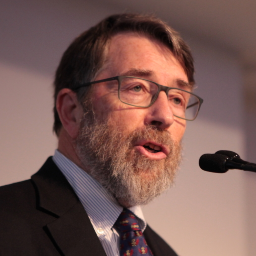
Mike Redwood
Columnist
King Charles III opened COP28 in Dubai last week by saying that it is vital that innovation is accelerated and green alternatives such as renewable energy are deployed across all industries.
He also asked the audience: “How can we accelerate innovation and the deployment of renewable energy, of clean technology and other green alternatives, to move decisively towards investment in this vital transition across all industries? For instance, how can we increase investments in regenerative agriculture, which can be a nature-positive carbon sink? What incentives are necessary – and how can those which have a perverse impact be eliminated with all due speed?”
After a long battle, it is now widely accepted that leather does not determine or drive the keeping of livestock. Nevertheless, leather does start its life on the farm and is tied to the nature and future of livestock farming. The requirement for at least a basic degree of traceability emphasises that linkage.
There are a great many types of livestock husbandry throughout the world, dependent on climate, landscape, soil types, history and culture. The biggest cattle herds in the world are in India, where cows are divine beings in Indian culture (a philosophy that is an important part of the Hindu faith and has become ideologically charged), and in Brazil, where a pasture-based system has become characterised by a tendency towards industrialisation and land grabbing of deliberately burnt Amazon rainforest.
China and the U.S. also have large populations with China increasingly industrialised and the U.S. tending to move the other way, towards a regenerative format, although it is the photos of their huge feedlots – used for the last few months of “finishing” – which are most prominent in the war against meat and livestock farming.
Diversity in farming practices
Such a diversity of farming practices also means that regenerative farming comes in many forms, adapted for the situation, and those interested should read the freely accessible short analysis on the Leather Naturally website. It is an excellent document and fully referenced.
In understanding the key features of regenerative agriculture, we are taken back to 2009 and agricultural scientist Graham Harvey’s book The Carbon Fields. He noted that livestock, such as cattle, sheep, goats and buffaloes, kept on long term grassland and rotated so as not to create damage by overgrazing, aided the soil to sequester huge amounts of carbon dioxide, a fact that is never figured into any climate calculation.
In modern regenerative agriculture, livestock are rotated between different paddocks or sections of pasture, allowing vegetation to recover before being grazed again. They fertilise and improve the soil’s ability to hold water and sequester carbon dioxide. Livestock should be reintegrated back into cropping systems, as part of the managed grazing system where low or no till methods are used and ground cover crops mean that the land is not left open – to wind loss or rain runoff – even in the winter months.
This takes some countries back to the historic methods of mixed farming before industrial fertilisers, weed killers and pesticides (all of which can be reduced or eliminated) started to move large areas of the global landscape towards mono-cropping and wastelands of biodiversity. The need for additional feeds such as soya should be largely eliminated with hat crops used to cover any periods when the climate demands that they shelter indoors. Increasingly, farmers are returning to breeds that can live happily outdoors all year, only limited by periods of flood or when the grass is so wet that too much damage would be done to it.
Modern grazing
As Leather Naturally points out, these more modern grazing practices also include converting marginal and degraded cropland into permanent pasture and forests, and the restoration of wetlands. Before the election of President Bolsonaro in Brazil, with his determination to allow further damage to the rainforest areas, using cattle to improve the huge Brazilian grassland area for carbon sequestration was part of Brazil’s climate plan.
This all comes before considering the studies of Professor Frank Mitloehner, who has helped the world of agriculture and leather, and hopefully a wider audience, understand the difference between natural methane from animals (which is part of the carbon cycle, essential to photosynthesis) and man-made or anthropogenic methane that comes from human behaviour such as extracting oil and gas, coal mining and municipal waste dumps.
Fast growth in livestock populations to produce meat, or badly managed intensive systems producing slurry, draws some livestock into the anthropogenic side of the equation, but Mitloehner’s detailed figures show global population growth has been generally declining through better husbandry providing more meat and dairy products per animal. Also, any produced slurry can be converted to biogas for power generation or the production of hydrogen. He shows clearly how we can adapt agricultural practices to reduce methane in the atmosphere and make a big contribution to counterbalance emissions from elsewhere.
As the need for traceability increases, evidenced by EU legislation on the origins of products related to deforestation, the source of our hides and skins becomes important. Regenerative agriculture involving livestock is, as King Charles says, an essential part of that. We should fight for our beef, lamb and milk not just because we want to make leather but because we want healthy diets, greater biodiversity and to retain our diverse farming communities around the world.
With food and farming a big topic at COP28, we must be sure that livestock and leather are fairly treated. Nature, communities and health all depend on it.
Follow Dr Mike Redwood on Twitter: @michaelredwood
Publication and Copyright of “Redwood Comment” remains with the publishers of International Leather Maker. The articles cannot be reproduced in any way without the express permission of the publisher.
